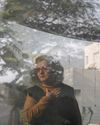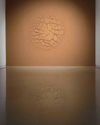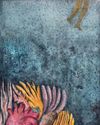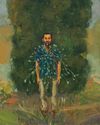
As I write this, my phone is filled with updates of the violence in Delhi, where mobs tore through neighbourhoods, killing, burning and maiming indiscriminately late in February. I’m just back from a rally at Mendiola in Manila on the anniversary of the People Power Revolution which had toppled the dictatorship of the Marcoses, where talk of the current President Duterte’s own descent into dictatorial moves is the subject of discussion. In my home city of Bangkok, students are beginning to take to the streets to protest the disbanding of the main opposition party.
By all accounts, our worlds are burning – how we face and continue to work in this burning world appeared to be one of the central questions that the 2020 Dhaka Art Summit (DAS) was moved by.
Titled Seismic Movements (rather poetically translated as Shancharon in Bangla), the fifth edition of the Summit from the 7th to the 15th of February, was helmed once again by Diana Campbell Betancourt, who serves as the Artistic Director of the Samdani Art Foundation. Unlike previous editions, which dove into tackling the political issues of the day head-on, this year the focus seemed more heavily on creating a space for historical introspections and unpackings of nationalisms, both regionally and globally. In doing so, it presented an interesting answer to the question of what different exhibition formats can continue to offer in our trying times.
Unlike many other biennales, which attempt to enfold entire cities, the Summit packs its entire exhibition and program into the Bangladesh Silpakala Academy, thus producing unexpected collisions, juxtapositions and points of meeting between disparate sections.
هذه القصة مأخوذة من طبعة July 2020 من Art India.
ابدأ النسخة التجريبية المجانية من Magzter GOLD لمدة 7 أيام للوصول إلى آلاف القصص المتميزة المنسقة وأكثر من 9,000 مجلة وصحيفة.
بالفعل مشترك ? تسجيل الدخول
هذه القصة مأخوذة من طبعة July 2020 من Art India.
ابدأ النسخة التجريبية المجانية من Magzter GOLD لمدة 7 أيام للوصول إلى آلاف القصص المتميزة المنسقة وأكثر من 9,000 مجلة وصحيفة.
بالفعل مشترك? تسجيل الدخول

Parts, Wholes And The Spaces In Between
Sonal Sundararajan introduces Samira Rathod's free-spirited and rebellious explorations in the world of architecture, furniture and design.

"The Fine Art of Going to the Pictures."
Dr. Banerjee in Dr. Kulkarni's Nursing Home at Chemould Prescott Road brings together 26 paintings featuring a series of dramatic scenes from Hindi and Bengali films. In conversation with Abhay Sardesai, artist Atul Dodiya talks about childhood trips to movie halls, painted figures gripped by tension, and the closeness and remoteness of cinematic images.

"To Finally Have Something of Your Own to Mine."
Dayanita Singh is the recipient of the coveted 2022 Hasselblad Award. Keeping the photograph at the centre, she speaks to Shreevatsa Nevatia about books, book objects, photo novels, exhibitions and museums.

OF DIVINE LOSS
Shaurya Kumar explores the relationship between the subject and object of devotion, finds Aranya.

THE PAST AND ITS SHADOWS
Neha Mitra visits two shows and three artists in Mumbai.

FORCE OF NATURE
Alwar Balasubramaniam dwells on absences and ephemeralities in his new work, states Meera Menezes.

SHAPES OF WATER
Devika Sundar's works delineate the murky, malleable boundaries between the human body and the organic world, says Joshua Muyiwa.

INTIMATIONS OF INTIMACY
Sunil Gupta shares his journey with Gautami Reddy.

THE FRACTURED PROSPECT
Nocturnal landscapes as ruins in the making? Adwait Singh looks at Biraaj Dodiya's scenes of loss.

TEETERING BEYOND OUR GRASP
Meera Menezes traces Mahesh Baliga's journey from Moodabidri to London.